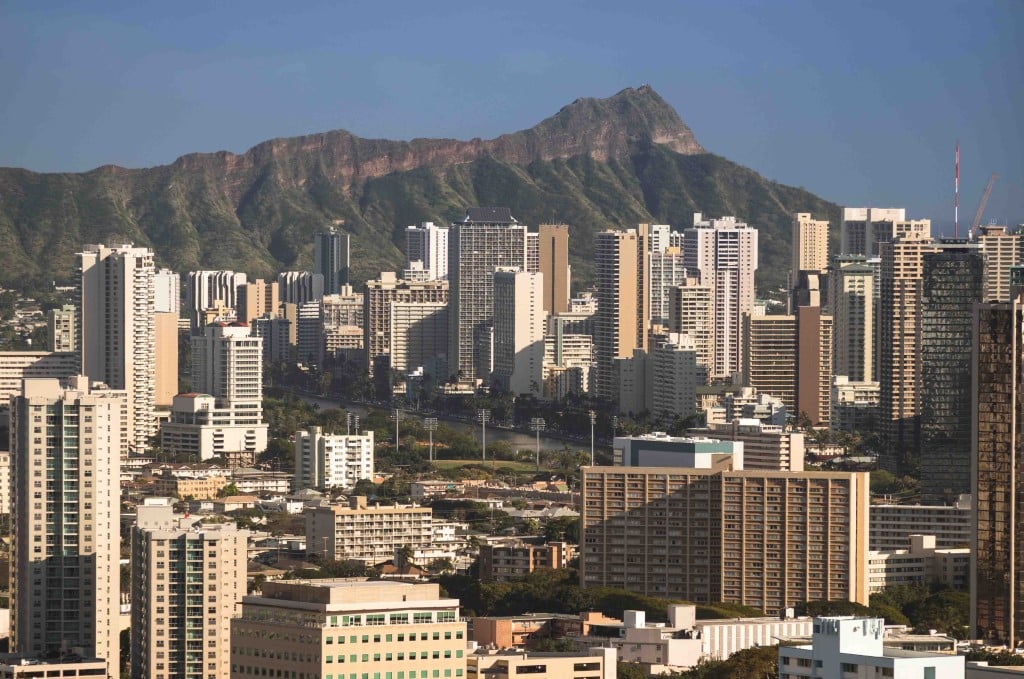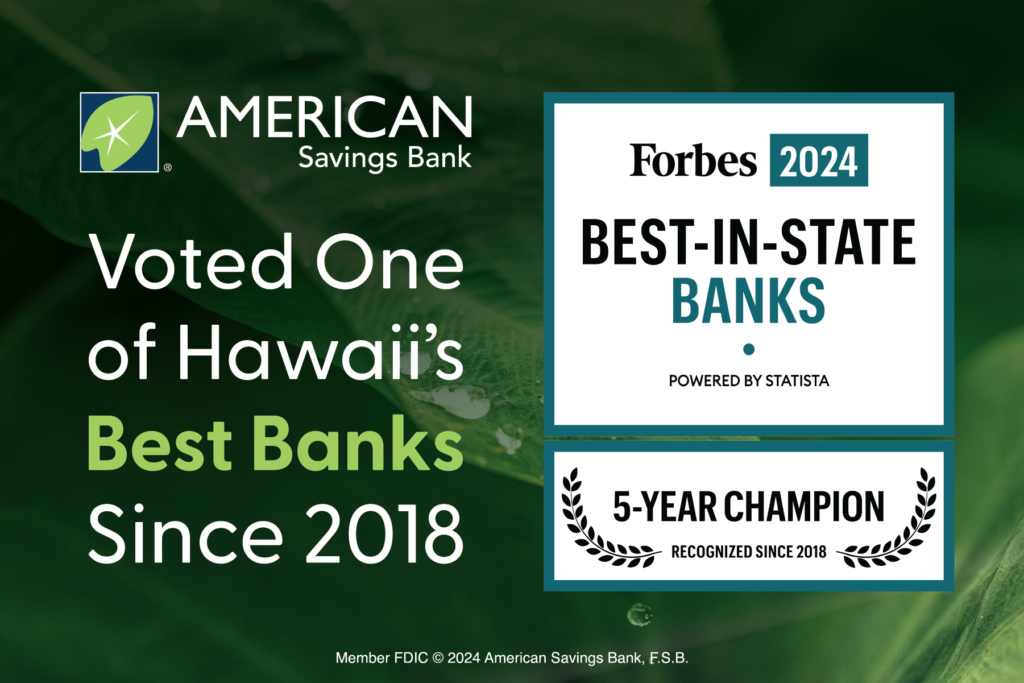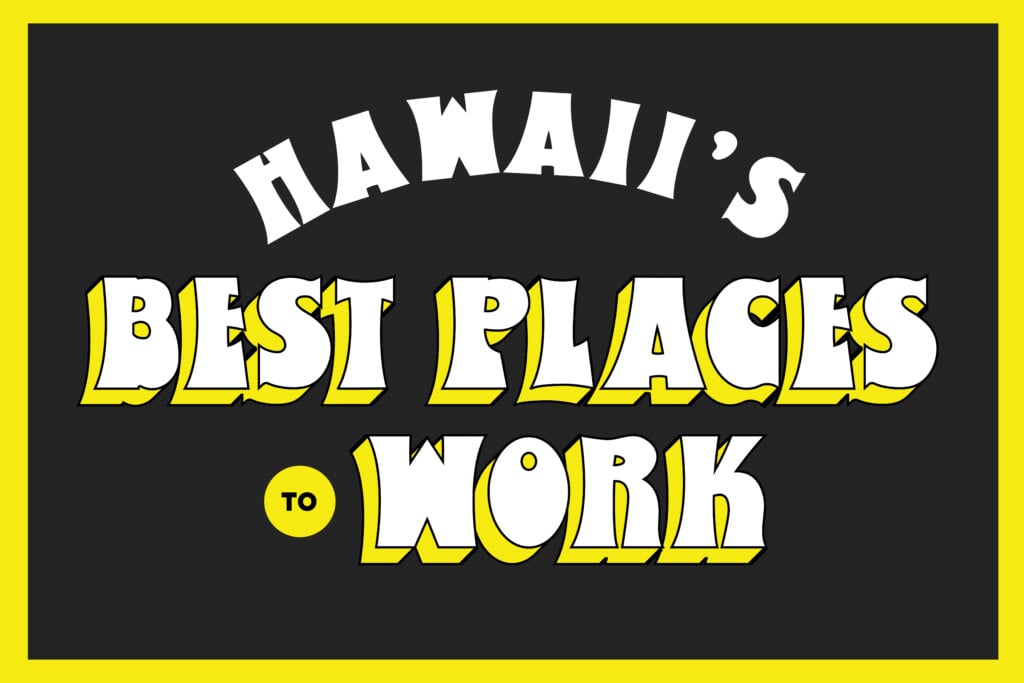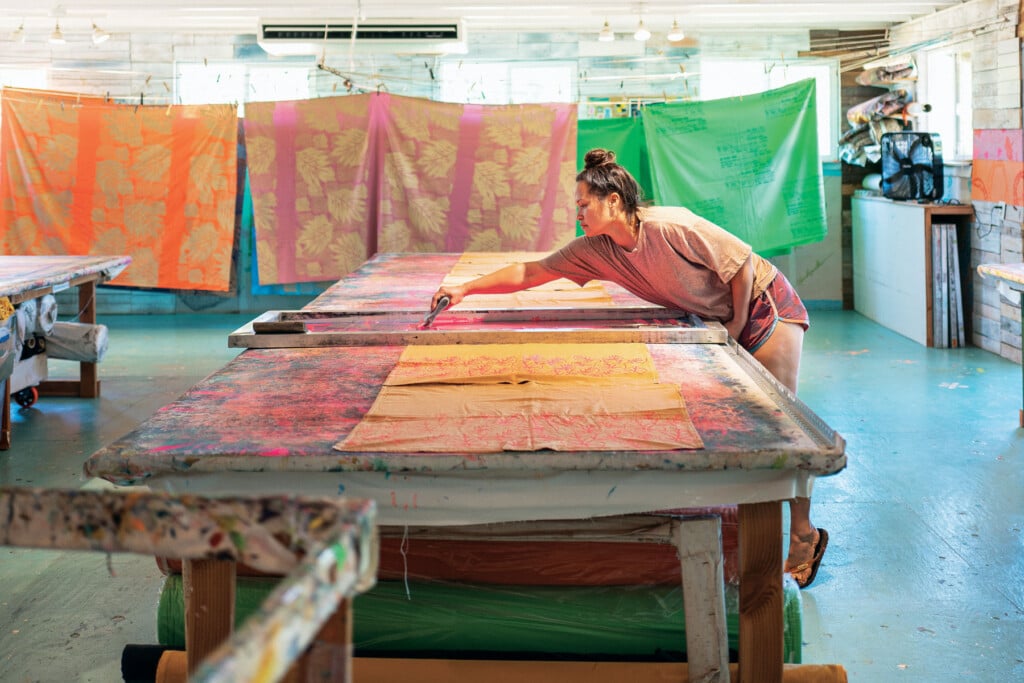Affordable Housing Leads to Better Health
Kaiser Permanente invests in efforts to end homelessness and increase affordable housing to make a difference in the health of Hawaii's people.

Among all the factors that contribute to a person’s health, affordable housing is critical. Without it, an individual’s health is negatively impacted, and the surrounding community feels the consequences.
Housing is considered affordable when it consumes less than 30% of a household’s income. When people are forced to overspend on housing, they must decide between nutritious food, access to medical care, or a roof over their head. The shortage of affordable housing options also results in critical health care workers choosing to live elsewhere, creating an access to care issue for everyone.
In Hawai‘i, the cost of living is rising and housing expenses have soared. Most people’s top expense is housing, and for some people, it accounts for most of their income.
To improve the health of the community, Kaiser Permanente actively partners with and invests in organizations throughout Hawai‘i that are working to find affordable housing solutions. These efforts include improving housing policy, readying future homeowners, and increasing the affordable housing supply.
A recent assessment by Kaiser Permanente stated that close to one out of five households (18 percent) on O‘ahu spend greater than 50 percent of their income on housing. In O‘ahu neighborhoods where one-quarter to one-third of residents identify as Native Hawaiian/Pacific Islander, the housing concerns are magnified.
Housing affordability has a direct effect on homelessness. For the houseless population, Hawaii’s expensive housing market and lack of affordable options makes it even harder for them to regain their independence.
“The amount you need to make in order to afford market rent is over $40 an hour in urban Honolulu, so there are not very many people that we work with that are able to command that kind of income,” says Jill Wright, director of philanthropy and community relations at the Institute for Human Services (IHS). “That’s partly a minimum wage issue but it’s more of a housing affordability and skills gap issue.”
IHS is a service provider that offers shelters and housing assistance. Wright says that a lot of times people are doubling up on housing to make it more affordable, but when the landlord finds out that there are more people living in a residence than expected, it often results in eviction and homelessness.
Once houseless, there is a tall mountain to climb. “If rent is over $2,000 a month, and you only make $4,000 a month, you have to make over $40 an hour in urban Honolulu, so there are not very many people that we work with that are able to command that kind of income,” says Jill Wright, director of philanthropy and community relations at the Institute for Human Services (IHS). “That’s partly a minimum wage issue but it’s more of a housing affordability and skills gap issue.”IHS is a service provider that offers shelters and housing assistance. Wright says that a lot of times people are doubling up on housing to make it more affordable, but when the landlord finds out that there are more people living in a residence than expected, it often results in eviction and homelessness.
Why Housing is a Health Care Issue
Housing is an important social driver of health. Being homeless and living on the streets can take decades off a person’s life. The average life expectancy of an unhoused person in the U.S. is 52.6 years compared to the overall average of 78.6.
This data highlights a critical link between housing and health, but it also matters that the housing be up to code and affordable. Access to affordable housing improves a person’s health by freeing up money for other essential needs, such as food and medical care, that would otherwise be sacrificed.
A report by the Center for Housing Policy, the research division of the National Housing Conference, found that affordable housing reduces stress and adverse health outcomes that result from anxiety or depression, as declining mental and physical health can be linked to hypertension and heart disease. It can also improve the lives of people living with chronic diseases.
Children are especially vulnerable. Without stable housing, minors are less likely to see a regular health care provider, may be exposed to drug use at a young age, and can be at risk for developmental problems.
Additionally, substandard housing increases the risk for health problems associated with hazards such as mold, lead-based paints, or allergens.
No Housing for Health Care Workers
Everyone’s access to health care is jeopardized when critical care workers cannot afford to live in Hawai‘i. The overall high cost of living means workers have less money to spend on housing. Similar to other industries, it then becomes difficult to retain and recruit people to work in Hawai‘i.
“If they cannot see a path forward in terms of getting into housing, they just say, ‘Well, I can’t see a future here in Hawai‘i,’ ” says Hilton Raethel, President and CEO of Healthcare Association of Hawai‘i (HAH).
HAH is a trade organization that represents hospitals, nursing homes, home health agencies, hospices, and assisted living facilities in the state. HAH has tracked and conducted studies on the adequacy of Hawaii’s health care workforce for the last several years.
Prior to the pandemic, in 2019, HAH had already found there to be a health care worker shortage. “We identified over 2,200 open patient-facing positions in Hawai‘i,” says Raethel. These open positions were not physician positions, he says, but included other health care workers, such as nurses, respiratory therapists, and patient service representatives.

Some staffing shortages in health care roles are due to the lack of affordable housing options in the state. | Photo: Getty Images
“Earlier this year, we redid that study and that vacancy rate has gone up materially,” Raethel continues. “We’ve gone from a 10% vacancy rate in 2019 to a 17% vacancy rate in 2022. So the pandemic has exacerbated the shortage of health care workers in Hawai‘i.”
The shortage results in problems getting faster care. The scarcity of staff means longer waiting times at emergency rooms because patients cannot be discharged quickly, and there are longer wait times to get into nursing homes because there are less workers to staff those beds.
A high cost of living and high cost of housing makes it very challenging to recruit new workers, even with competitive salaries.
“Hawai‘i is a very desirable place to live and housing prices are increasing at a fairly high rate,” says Raethel. “In Hawai‘i, we pay the second highest rate in the nation for registered nurses. California is the only state that pays more than us and right now they’re paying around $121,000 a year for nurses. Hawai‘i is paying about $106,000 a year. But when you take into account the cost of living… we drop to last in the nation, so we are literally at the bottom in terms of purchasing power for nurses.”
This example holds true for other health care professions as well. Since mortgage payments are similar to rent payments, the down payment is usually the first hurdle that makes or breaks a decision to work and live in Hawai‘i. If potential workers cannot overcome that, they will choose to move to other states where the cost of living is lower.
HAH is hoping to address this barrier by coming up with a down payment solution with local banks and financial institutions, given that health care workers tend to have a stable profession and, generally, good financial prospects.
“We’re working on a series of programs where instead of a 15% or 20% down payment, health care workers could get into a house or an apartment or condo for maybe 3% down, 5% down, somewhere in that ballpark,” says Raethel. “That’s much more achievable than 10%, 15%, or 20%.”
The initiative amounts to a work-around to the larger problem, but is a positive step in alleviating the current health care worker shortage.
“Health care is a great profession, has lots of opportunity, but we have to address this housing issue,” says Raethel. “And we have to figure out how to get more staff, how to train more staff, how to recruit more staff, and how to retain more staff.”
More Money for Affordable Housing
Housing is essential to people’s health and livelihood. Through its Thriving Communities Fund, Kaiser Permanente invests in affordable housing across the United States, and is currently lining up projects to support in Hawai‘i.
The Thriving Communities Fund is a $400 million revolving loan fund that is offered by Kaiser Permanente for the development of affordable housing projects of $10 to $50 million. The funds can be used for many types of development projects, from building to land acquisition and pre-development.
In other states, this fund has supported various development projects. Last year, $50 million was committed to helping build 1,800 permanent supportive housing units in Los Angeles and, prior to that, $5.2 million went toward the purchase of a 42-unit affordable housing complex in Oakland, California.
In Hawai‘i, Kaiser Permanente’s Thriving Communities Fund will support equally committed partners who want to add affordable housing to Hawaii’s inventory to help with the ongoing demand.
Solving the Housing Affordability Crisis
The overall health of the community will improve if Hawai’i can solve the affordable housing supply problem. It is especially challenging considering that the state is one of the most expensive real estate markets in the country. But there are many organizations that Kaiser Permanente partners with that are helping to move the needle in a positive direction.
Through the Hawai‘i Community Foundation, the House Maui Initiative advocates to improve housing development and affordability for families. “One of our goals is helping to make the connections between developers that are ready and these CDFIs (community development financial institutions),” says Keoni Kuoha, director of the House Maui Initiative.
“We’re glad to be partnering with Kaiser Permanente on some of these things,” Kuoha says. “They’re one of the large funders in Hawai‘i. Our philanthropic organizations get together regularly, and we’ve been exploring the problems around housing and exploring how we can strategically deploy funds to get the system to meet the housing needs of everyone who calls Hawai‘i home.”
House Maui also works directly with Hawaiian Community Assets (HCA), which educates and assists future homeowners on how to qualify financially, so that they’re ready as soon as a house is available.

The nonprofit Hawaiian Community Assets provides financial counseling services to prepare people for homeownership. | Photo: courtesy of Hawaiian Community Assets
Through its network of centers, HCA connects families with certified housing counselors, who can review their financials and create a plan toward mortgage qualification, while its sister organization, Hawai‘i Community Lending, provides loans, grants, and help with financing.
“Prices are just so high right now,” says Jeff Gilbreath, executive director of Hawai‘i Community Lending, which helps low and moderate income families to buy homes and afford rentals. “The gap between the home price and the mortgage the family can afford is a big issue.”
Another issue Gilbreath has found is that families don’t have enough cash for a down payment. To help with this, Kaiser Permanente partnered with HCA last year in a statewide program that offered down payment assistance to families seeking homeownership.
“Families enroll in financial opportunity centers; they save money over a period of time, and then we match the funds to help with down payment closing costs,” says Gilbreath. The work that the centers have done has created a pipeline for mortgage qualified home buyers who are ready to purchase an affordable home when one comes on the market.

Hawaiian Community Assets helps families create a plan toward mortgage qualification. | Photo: courtesy of Hawaiian Community Assets
But affordable housing options have become increasingly harder to find. “I think we all know this is not your grandfather’s or your grandmother’s housing market,” says Kenna StormoGipson, the director of housing policy at the Hawai‘i Budget and Policy Center, which is a program of the Hawai‘i Appleseed Center for Law & Economic Justice. Kaiser Permanente supports the center’s ongoing housing policy research.
StormoGipson sees many reasons for Hawaii’s affordable housing crisis that need to change. “Some of it is that it’s just so easy for money from literally around the world to be invested in housing,” she says. Housing has become a global tool for wealth investment, and that works against the goal of affordable housing. Additionally, low property tax rates have made buying houses here more attractive.
Another problem is that Hawaii’s houses are largely privately financed, StormoGipson says, therefore it’s going to take large public financing to turn things around. Private investors are looking for a return, while public funding doesn’t look to maximize profit.
The Hawai‘i Appleseed Center, along with HCA and other organizations, prepared the Maui County Comprehensive Affordable Housing Plan that was passed this year. One of the key recommendations was to increase taxes on investment properties and short-term rentals to increase the County’s affordable housing fund.
“We actually had recommended that they aim for $58 million in their affordable housing fund per year moving forward, and they were able to secure that,” StormoGipson says. The fund also received authorization to support housing bonds.
Money is already being used to fund over 1,000 new homes as a result of the plan passing, she says.
“Kaiser Permanente’s help has been very instrumental because it has allowed Appleseed to maintain a housing policy focus consistently regardless if there’s a particular plan in place,” she says. “With the support of Kaiser Permanente, I’m able to stay current and stay up to date on nationwide trends, which means we’re really in a good position to offer support for things like the Maui plan.”
All of these efforts are getting new affordable housing projects off the ground, streamlining processes, and readying people with the financial tools to buy. Understanding how this process works leads to better health and better communities and will help shift public policy and opinion even more.“We need to think of housing as a public good,” says StormoGipson.
“We need to shift that mindset and think of this as important for people, for our economy, for stability. Housing is a public good, and once you embrace that, then you can say, ‘OK, let’s invest the money to make that happen.’”







